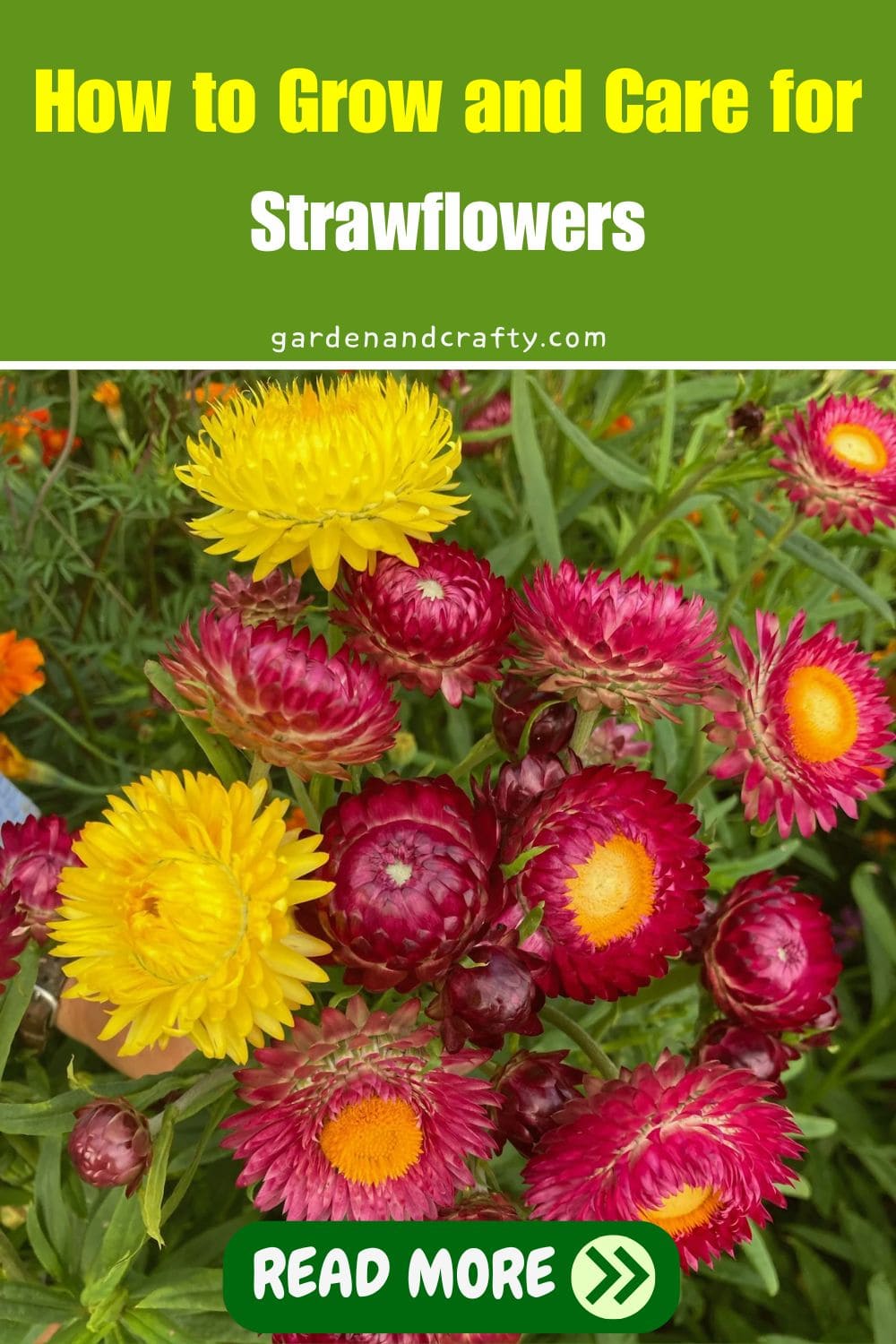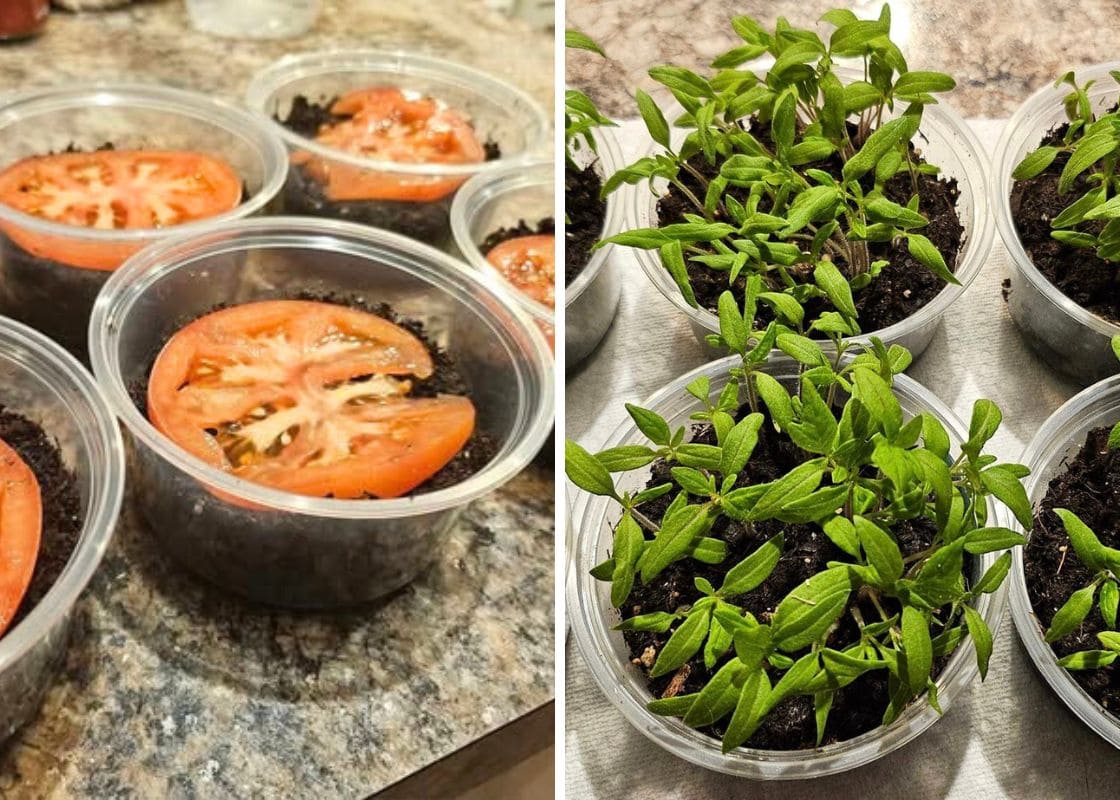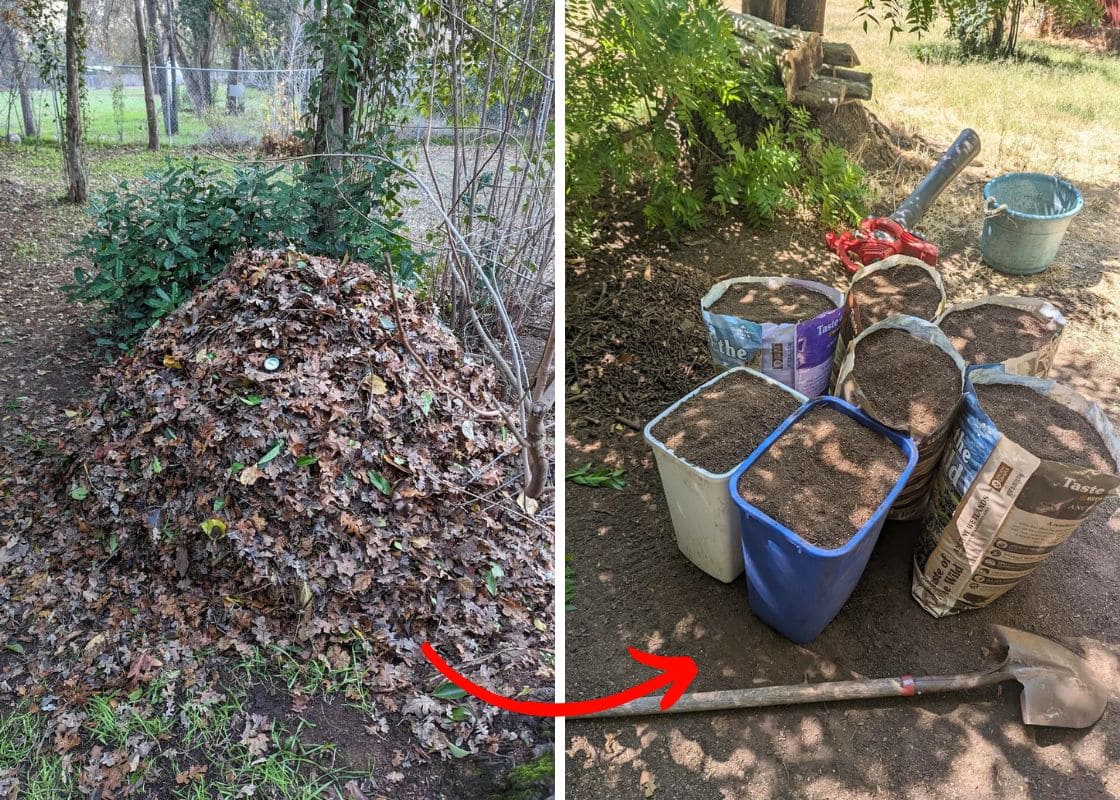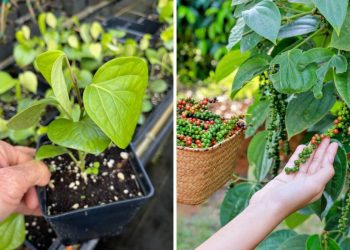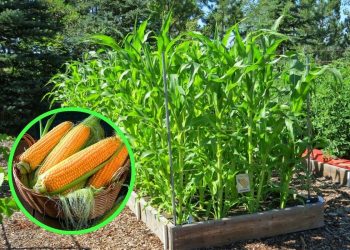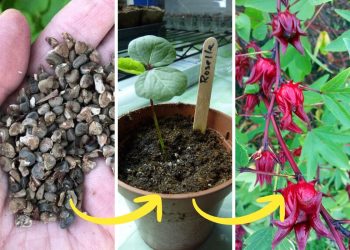Have you ever dreamed of a flower that not only brightens your garden but also retains its beauty all year round? Enter the world of strawflowers.
These robust annuals can flourish in various climates, standing tall at 12 to 36 inches with their slender stems and elongated leaves.
From late spring to early fall, they burst into a kaleidoscope of colors – vibrant yellows, fiery oranges, deep reds, soft pinks, and pristine whites.
Besides, studies have revealed that strawflowers possess anti-inflammatory properties, helping to reduce scars, soothe skin irritations, and even alleviate arthritis symptoms.
Summary:
- Strawflowers are vibrant, long-lasting blooms belonging to Asteraceae family.
- To grow strawflowers successfully, start seeds indoors in early spring and harden off seedlings before transplanting them outside.
- Water weekly, ideally in the morning, and fertilize with a balanced 13-13-13 mix for steady blooms.
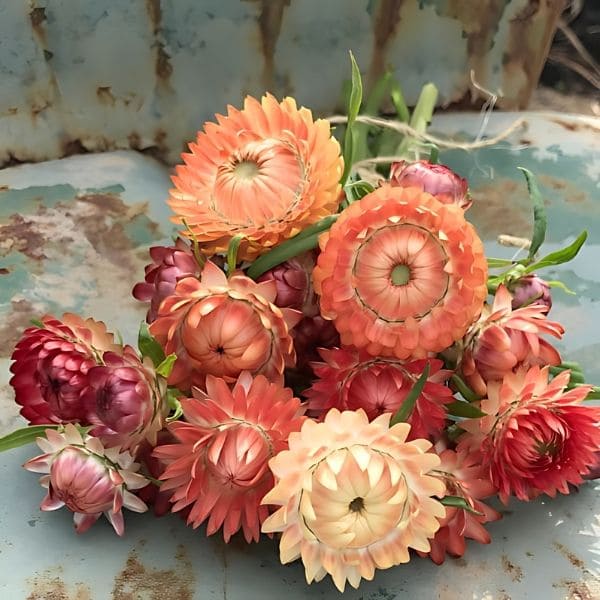
| Scientific name | Helichrysum bracteatum |
| Common names | Strawflower, Everlasting Flower |
| Plant type | Annual or short-lived perennial |
| Height | 0.5 to 1 meter |
| Flower colors | Yellow, orange, red, pink, white |
| Bloom time | Summer to frost |
| Sun requirements | Full sun |
| Soil requirements | Well-drained, sandy soil |
| Water requirements | Moderate, drought-tolerant |
| Native range | Australia |
Propagation
From Seeds
Sow the seeds in the spring after the danger of frost has passed. I like to surface sow them in moist soil and ensure they get plenty of bright light.
You’ll see the seeds sprout within 7 to 10 days. Before transplanting them outdoors, it’s crucial to harden off the seedlings.
Gradually expose them to outdoor conditions, and once the temperatures consistently stay above 60°F, they’re ready to be moved.
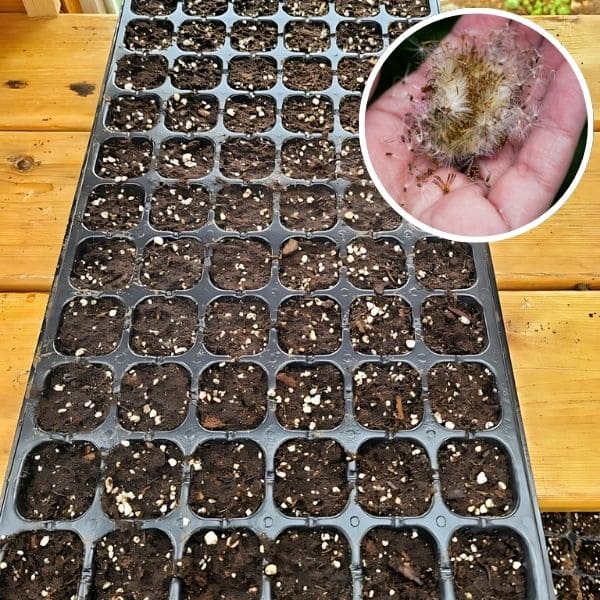
From Cuttings
In my experience, taking 4-inch stem tips in either spring or fall works best. I usually remove the lower leaves and dip the cuttings in rooting hormone before planting them in moist soil.
Keep the cuttings warm and well-lit until they establish roots. This method is rewarding as it often results in stronger plants.
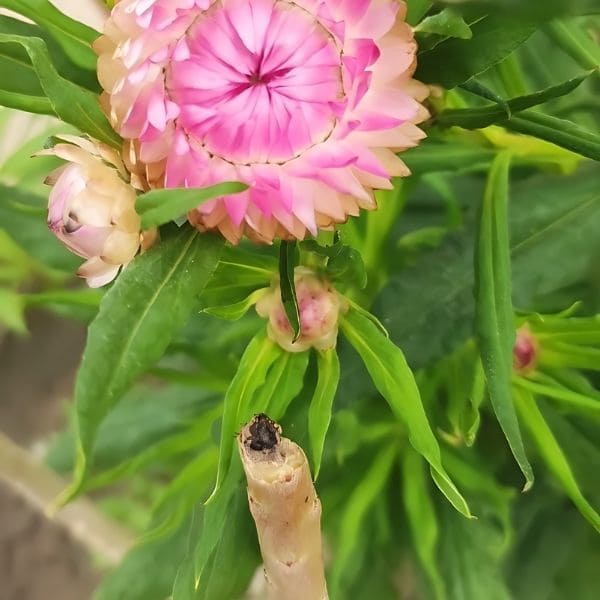
Transplanting
You should choose an overcast day after the last frost to reduce transplant shock.
Carefully move your seedlings or rooted cuttings into prepared soil, ensuring they have enough space to grow and thrive.
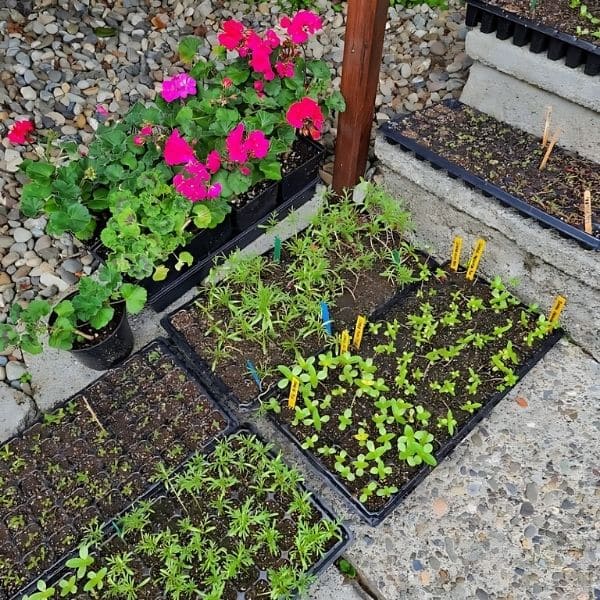
Growing Strawflowers
Preparation
You need to look for fresh, high-quality seeds from a reputable source. Here are my favorite varieties of strawflowers:
- Cottage Pink Strawflower: This variety boasts delicate pink blooms and has a compact growth habit, reaching up to 18 inches in height. It’s perfect for borders and flower beds.
- Purple Red Strawflower: With rich, velvety hues, this variety stands out with a height of 24 to 30 inches.
- Golden Yellow Strawflower: Bright and cheerful, this flower between 12 to 24 inches tall and brings a sunny disposition to garden spaces and arrangements alike.
- Scarlet Strawflower: This flower is known for its intense red blooms and can tower up to 24 to 36 inches.

Types of Strawflowers
While strawflowers are tolerant of poor soil conditions, they do require good drainage to thrive. So add compost to improve soil structure and provide essential nutrients.
Before sowing seeds or planting cuttings, it’s crucial to clean your seed trays, pots, or any other containers.
I recommend using a solution of 1 part bleach to 9 parts water to ensure any lingering pathogens are eliminated.
How to Grow Strawflowers
You should start your strawflowers indoors in early spring. Begin by soaking the seeds in lukewarm water for about 12 hours to soften the seed coat and encourage quicker germination.
Use modular trays filled with multi-purpose compost mixed with perlite for improved drainage. Sow several seeds per cell, cover lightly with perlite, and keep the soil moist.
As the seedlings grow, thin them out to one per cell to ensure each plant has enough space.
Before transplanting outdoors, you need to harden off the seedlings by placing them outside during the day and bringing them in at night for about two weeks.

In mid to late spring, you should space them about 23 to 30 cm apart in a well-prepared garden bed and water them thoroughly several weeks until they are established.
For a lively and pest-free garden, you can plant basil and thyme to deter pests nearby. Also, pair them with sun-loving annuals such as marigolds and zinnias for a vibrant display.
Care for Strawflowers
Soil
Strawflowers prefer sandy or rocky soils with a mildly acidic to neutral pH of 5.5 to 6.5. However, they can grow in various soil types as long as they drain well.
Mulch helps retain soil moisture and regulate temperature. Loosen the soil to a depth of 10 to 12 inches and mix in 3 inches of compost.
Light
When starting strawflowers from seed, place the trays in a bright location but avoid direct sunlight to prevent scorching.
After transplanting, ensure they receive full sun for 6-8 hours daily for optimal growth. Strawflowers thrive in temperatures between 70-75°F (21-24°C).
If planted in partial shade, they may still grow but with fewer blooms and less vibrant colors.
Water
You should water strawflowers 1 inch of water per week. The best time to water them is in the early morning to dry out during the day and reduce the risk of fungal diseases.
I recommend using a soaker hose or drip irrigation system to deliver water directly to the roots, avoiding the foliage.
Fertilizer
Before planting, I want the young plants to have all the nutrients they need by applying a balanced fertilizer at a rate of 300 pounds of 13-13-13 per acre.
Once my strawflowers begin to grow, I continue feeding them every two weeks with the same fertilizer.
Pruning and Deadheading
When your strawflower plants reach about 12 inches tall, I recommend pruning the center stalk.
Use sharp, clean scissors or pruning shears to make a clean cut just above a set of leaves to encourage side branching for more flowers and stronger stems.
In addition, you need to make sure deadheading, or removing spent flowers by cutting above a leaf node to promote more blooms.
Pests and Diseases
Aphids and spider mites are a common issue to strawflowers. They cluster on new growth and sucking sap stunting growth and yellows leaves.
I’ve found that keeping humidity levels up and regularly misting the plants can deter these pests. If they do appear, miticides or insecticidal soap are effective treatments.
Moreover, your strawflowers can suffer from powdery mildew with white spots on leaves. Especially, overwatering or poorly drained soil can lead to wilting and root rot.
Therefore, apply a fungicide at the first sign of these diseases. Also, plant them in well-draining soil and avoiding overwatering.
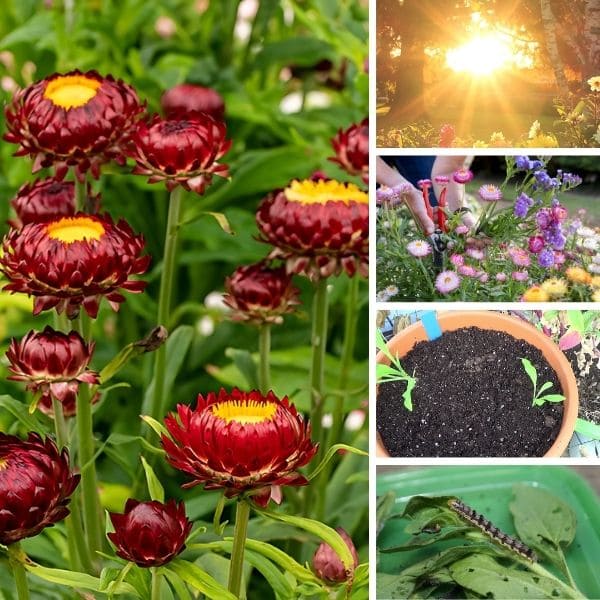
Harvest
To know if strawflowers are ready to harvest, perform the “Wiggle Test.” Grasp the stem 8 inches below the bloom and wiggle it. If the bloom flops, wait until the stem stiffens.
Harvest a few hours after sunrise when the flowers are open enough to see. You should cut in the morning when the flowers are dry.
For fresh arrangements, cut when 3 to 4 bract layers have opened. For drying, cut when 2 to 3 layers of bracts have opened.
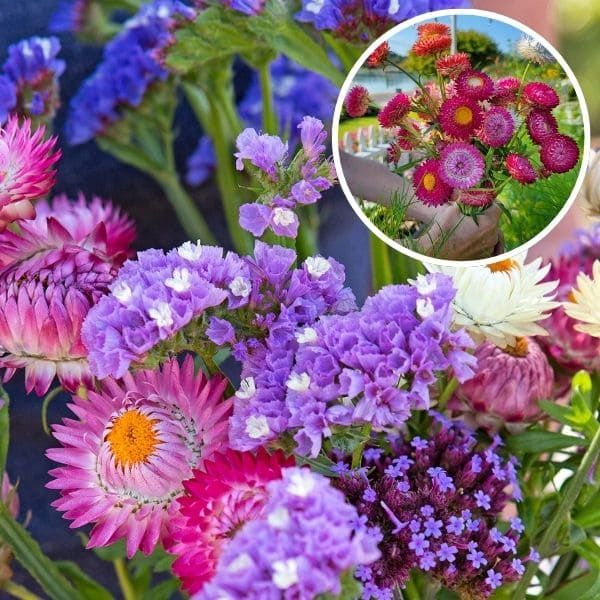
Preservation
After harvesting your strawflowers, you need to place the stems in fresh water for a few hours in a dark place to help them maintain their vibrancy and firmness.
Hanging Method
You can dry strawflowers is by hanging them upside down in a warm, dry area away from direct sunlight.
This method helps the blooms retain their shape and color, although the stems may become fragile. I
Floral Wire Method
For a different approach, you can use the floral wire method. Simply pop the bloom off the stem and insert floral wire through the bottom of the flower.
This method is particularly useful if you want to keep the flower’s shape and structure intact for arrangements.
Basket or Bowl Method
For smaller projects, I often let the blooms dry naturally in a basket or bowl.
This easy method allows the flowers to dry and works well for creating potpourri or small decorative pieces. It’s a simple yet effective way to enjoy the longevity of your strawflowers.

FAQs
Are strawflowers self-seeding?
Yes, strawflowers can self-seed under favorable conditions. If you allow the flowers to mature and drop seeds, you might find new plants sprouting the following season.
How to collect seeds from strawflowers?
Wait until the flowers have faded and the seed heads are dry. Gently remove the seed heads and shake them over a container to collect the seeds.
Store them in a cool, dry place until you’re ready to plant them.
How do you string strawflowers?
Cut the stems when the flowers are fully open but not yet faded. Thread a needle with string or thin wire through the base of the flower heads.
Hang the string in a dry, dark place until the flowers are fully dried, preserving their vibrant colors and shape.
